Submitted by: Greg Hunolt
July, 2012
The Wells Manufacturing Company of Fond du Lac, Wisconsin, manufactured radios for a brief period in the mid-1920’s. This article will provide some background on the Wells company, discuss its radio products, and note very briefly where it is today.
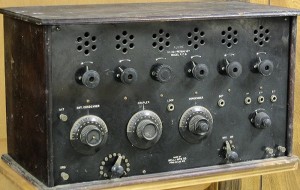 Figure 1 – Wells Alkire R.F. 6 Receiver, 1922
Figure 1 – Wells Alkire R.F. 6 Receiver, 1922
Background on Wells
An internal Wells document notes that “The birth of the Wells Manufacturing Corporation dates back to the year 1903 when it began to manufacture the Duplex Vibrator-type automotive ignition coil. At this time the total employment was six people.” Wells began in 1903 as the Duplex Coil Company, a small machine shop operated by Edward J. Huber, and then was incorporated in 1912 by engineer Robert C. Wells of Fond du Lac as the R. C. Wells Manufacturing Corporation. The company first produced the duplex vibrator coil for automotive ignition systems and added other automotive electrical components, including ignition coils for the Ford Model T. By 1917, Robert C. Wells had left the company, but it carried on under the Wells name. In 1918 Wells moved to a building at the corner of Brooke and 2nd Streets in Fond du Lac, and in 1919 it legally became the Wells Manufacturing Company. Figure 2, page 1, is a photo of the Wells building, circa the late 1940’s judging from the automobiles.
The years after World War I saw the now famous “radio boom” as broadcasting stations multiplied, folks were scrambling to build radios from kits or from scratch, and growing number of manufactured radio sets were brought to market. Visionary individuals (think Atwater Kent, Powell Crosley) pushed their companies – or started up new companies – to jump into the booming radio market. At Wells, the visionary seems to have been Edward W. Silverthorne, company vice president and sales manager, who in early 1922 returned from the east coast having hired an engineer from Westinghouse to develop a radio line for Wells. The March 6, 1922 edition of the Fond du Lac Daily Commonwealth newspaper (see the headline on page 1) reported that the Wells Manufacturing Company installed a $20,000 plant to manufacture radio sets that will “cover the U.S.”. The paper noted that “Fond du Lac is to be among the first of the cities, if not the first in the northwest, to manufacture radiophones.” The report quotes Silverthorne: “We have been preparing for this venture for some time. Now it has ceased to be a venture. During my trip east, and while in Chicago during the last two weeks, I found on investigation that the demand has so far exceeded the supply of radiophone sets that the electrical firms find it impossible to keep up. … Our engineer, W. D. Alkire, formerly with the Westinghouse Electric, has planned all of our equipment, and within a short time we will be turning out radiophones at a medium price that will be capable of receiving broadcasts from all parts of the United States. … As soon as we get operating it will mean more employees. I believe, too, that this industry has a growing future. The demand has only begun and the radiophone is in its infancy. There will be rapid evolution, which means much replacement as the wonders of this new aerial device are more and more developed.” The article concluded by stating that the Wells Manufacturing Company will manufacture complete sets and all parts.
Over the years 1922 through at least 1926 (and possibly as late as 1931) Wells produced at least 14 radios / pieces of radio equipment. Wells was listed in the McGraw-Hill Trade Directory in November 1924, August 1925, and November 1926. Wells sets were listed in the June 1924 and June 1925 Radio Industry Encyclopedia of Radio Receiving Sets, the 1925 and 1926 Radio Retailing Receiving Set Specifications, and the March, 1925 Radio News Radio Set Directory (see below). Wells sets were also listed in the Set Catalog included in the 1933 John F. Rider Complete Trouble Shooter’s Manual.
Wells radios are described below in three parts; first the 1922 Alkire line, followed by the 1923 Arlington set, and then the 1924 – 1926 “Model 24” group of sets.
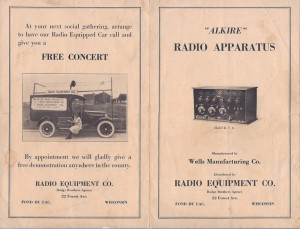 Figure 2 – Wells Alkire Brochure (cover and back) 1922
Figure 2 – Wells Alkire Brochure (cover and back) 1922
Wells Alkire Radios
A Wells brochure from 1922 (see figure 2 above) describes the line of “ALKIRE” radio apparatus offered by Wells – a line bearing the name of the chief engineer, W. D. Alkire. The Alkire line included the following:
1. Model R. F. 6 Receiving Set (6 tubes):
“This is a scientifically constructed, long distance, Receiving Set, which employs an entirely new principle in Receiving, due to its Radio Frequency amplification. It enables you to tune an incoming station very strong and at the same time eliminate many interferences from surrounding stations. Has two stages of Radio Frequency and three of Audio Frequency. The ideal set for lodges, banks, Radio Clubs, etc.”
2. Model R.F. 4 Receiving Set (5 tubes):
“Is the same as our model R. F. 6 except that it has one stage of Radio Frequency and two stages of Audio Frequency, and therefore does not bring in the signals quite as loud as the R. F. 6 set. An ideal equipment for the home.”
3. Model R. S. 2 Receiving Set (4 tubes):
“This is the most complete, popular receiving set of the non-regenerative type produced. It is a fine outfit for residence, office, school, or summer home. Under favorable conditions, stations at comparatively long distance can be heard. It is so designed that a child can easily tune in, because of its great selectivity. Has Detector and two stages of Audio Frequency amplification.”
4. Model R. S. 1 Receiving Set (2 tubes):
“This set is of the same type as our model R. S. 2, but has only one stage of Audio Frequency amplification. The ideal set for father to purchase for his son who wishes to learn Radio from the ground up.”
5. Model D-2 Amplifier and T. R. Tuner (3 tubes):
“This combination set was developed to supply the demand for a medium priced, efficient, receiving set. With this set you can hear all the broadcasting stations within 1,000 miles. D-2 has detector and two stages of Audio Frequency amplification. All necessary wires furnished for T. R. tuner.”
6. Model T-R Tuner and D-1 Amplifier (2 tubes):
“The tuner used in this combination set is the same as used without D-2 amplifier. The [D-1] amplifier has one stage of amplification.”
In addition to the sets listed above, the brochure notes that Wells also offered a complete line of Alkire parts.
The brochure announced that the Wells Alkire line was distributed in Fond du Lac county by the Radio Equipment Company, Dodge Brothers Agency, of Fond du Lac. Note the radio-equipped automobile shown in figure 2, apparently used to demonstrate and create interest in the Wells Alkire sets.
There is no information available about the number of these sets that were manufactured and sold, or if indeed all of the models listed in the brochure were ever produced.
Wells advertised the R. F. 6 Alkire Receiving Set in the December, 1922, issue of Wireless Age / Experimenters’ World (see figure 3 below).
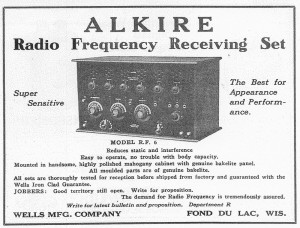 Figure 3 – Wells ad, Wireless Age, December 1922.
Figure 3 – Wells ad, Wireless Age, December 1922.
The ad notes that the set “reduces static and interference, easy to operate, no trouble with body capacity”, and “the demand for Radio Frequency is tremendously assured”.
Figures 4, 5 and 6 are photos of an Alkire R. F. 6 receiver owned by Stewart Oliver, reproduced here with thanks to him. Note the tuning condensers and coil under the chassis.
 Figure 4 – Alkire R. F. 6, courtesy of Stewart Oliver
Figure 4 – Alkire R. F. 6, courtesy of Stewart Oliver
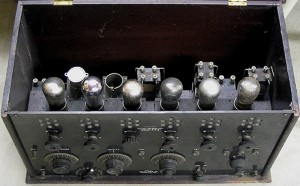 Figure 5 – Stewart’s Alkire R. F. 6, top view
Figure 5 – Stewart’s Alkire R. F. 6, top view
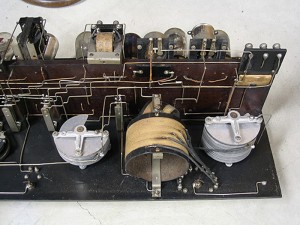 Figure 6 – Stewart’s Alkire R. F. 6, chassis
Figure 6 – Stewart’s Alkire R. F. 6, chassis
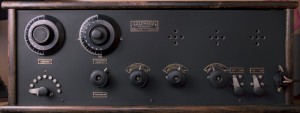 Figure 7 – Wells Arlington, courtesy of Wells Vehicle Electronics
Figure 7 – Wells Arlington, courtesy of Wells Vehicle Electronics
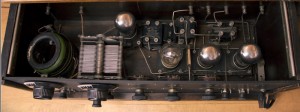 Figure 8 -Wells Arlington, top view, courtesy of Wells Vehicle Electronics
Figure 8 -Wells Arlington, top view, courtesy of Wells Vehicle Electronics
Wells Arlington Radio
The next Wells product we have examples of is the Wells Arlington receiver, shown in figures 7 and 8 above. This set is on display in the office of the current president of Wells Vehicle Electronics. The Arlington is a four tube set, with one non-regenerative RF stage and two transformer coupled AF stages.
The Arlington was advertised in the November 22, 1923 edition of the Fond du Lac Daily Commonwealth, in an ad placed by the T. W. Meiklejohn Co., of Fond du Lac, distributor for the Wells Manufacturing Co. The ad described the Arlington as: “The Arlington is of the radio frequency type employing one stage of radio frequency, detector, and two stages of audio frequency amplification. Is complete in every detail. Can be successfully operated with either dry cell or a storage battery. Is remarkable for its long range, fineness of tuning, simplicity of operation, freedom from interference, and the volume of reception. Is put up in a handsome walnut finished cabinet that will be an ornament to the finest home.”
This was the only ad for the Arlington receiver that I have found so far, by a search through the daily newspaper for mid-November 1923 thru early January 1924 – the Arlington was apparently not heavily advertised in its home city. My guess is that the name “Arlington” refers to the very powerful station NAA operated by the U.S. Navy in Arlington, Virginia, at the time, which broadcast clock time reference data used businesses such as banks and jewelry stores (selling clocks and watches).
Photos of Wells Arlington receivers appeared in Antique Radio Classified in January, 1989, and October 2000. I have also corresponded with two owners of Arlingtons, Bill Busetti and Ron Crandall, who have kindly provided me with photos of their sets. Alas, I do not have an Arlington of my own.
Wells Model 24 Receiver
Figures 9 and 10 are photographs of a Wells model 24 receiver currently on display in the office of the president of Wells today.
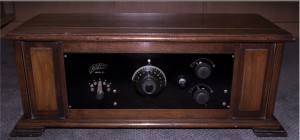 Figure 9 – Wells 24, courtesy of Wells Vehicle Elect.
Figure 9 – Wells 24, courtesy of Wells Vehicle Elect.
 Figure 10 – Wells 24, Top View
Figure 10 – Wells 24, Top View
The Wells 24 was written up in the December 7, 1924 issue of the Milwaukee Journal in an article by “BCL”, the Journal’s radio writer, titled “Wisconsin Receiver for the Multitude”. The article states: “Here’s a Wisconsin-built radio receiver which, we venture to say, is “the set for the multitude” because it is low in price and high in performance. It is the Wells, made in Fond du Lac. It uses four tubes and is housed in a cabinet that affords room for three dry cell A batteries and small B and C batteries. We would advise the use of larger B batteries than the cabinet will hold, for the receiver contemplates putting 90 volts on the plates and tiny B batteries will prove short-lived and not economical under that strain. Our test was made with dry cell tubes, but standard sockets are used and one can use 5-volt tubes and storage A battery, and should get some greater volume than with dry cell supply for the filaments.
“In about an hour one evening during test of this set 11 stations were logged, ranging from Houston, Texas, a station listed as 10 watts power, to Buffalo and Pittsburgh on the east; Shenandoah, Iowa on the west, and Minneapolis on the north, all on an indoor antenna, one of those coil springs, with water pipe ground. All, with the exception of the Texas station, came in with loudspeaker volume. At a previous test in the Journal building, where local induction is bad, [the set] performed remarkably well, bringing in a dozen stations in quick succession on the loud speaker.“
“In an additional test, one station on the Pacific Coast and one in Cuba were brought in less than ten minutes apart. The set has fair selectivity, depending on the use of the potentiometer to achieve this end, but is not so sharp as to make tuning of DX stations too difficult for the average person. Used with a good outside antenna, the volume is surprising for dry cell tubes and on stations like KDKA, WGY, and WBZ, brings in music on headphones alone to be heard all over an apartment.”
The Wells 24 was advertised in the Milwaukee Journal in December, 1924, by Schuster’s, the largest department store in Milwaukee at the time: “A Gift Radio Will Be Enjoyed by All the Family – Wells Model 24 Receiver, 4-Tube Dry Cell Set at $70”. The ad describes the model 24: “No storage batteries to trouble you. This splendid Wells receiver uses dry batteries exclusively which are contained in special compartments within the set. Tuning easily accomplished by the use of one dial only. Vernier adjustment brings in long distance stations with remarkable clarity. A superior outfit throughout.” The ad indicates that they will bring the set to your home for a demonstration and also offers other brand sets for a demonstration. The ad mentions that two other Wells sets are available, priced at $65 and $85, but provides no other information on the other sets.
The Radio Set Directory included in the March, 1925 issue of Radio News, p1663, lists the Wells 24 and two other models, the Wells 23 and 25, see figure 11, page 11. These are presumably the other two models referred to by price only in the December 1924 ad.
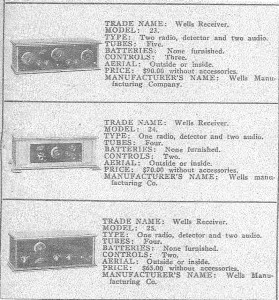 Figure 11 – Wells Sets in the Radio News Radio set Directory, Radio News, March 1925, p1663.
Figure 11 – Wells Sets in the Radio News Radio set Directory, Radio News, March 1925, p1663.
The Set Catalog included in the 1933 John F. Rider “Complete Trouble Shooter’s Manual” (later reproduced by Ralph Langley and Morgan McMahon) lists the same three models for 1925, the Wells 23, 24 and 25. The Rider Set Catalog also lists four models for 1926, models 25, 27, 35 and 45, all TRF sets. The 1926 model 25 (not the same as the 1925 model 25) is listed as a three dialer with six tubes, 2 RF stages, a detector, and 3 audio stages. The model 27 was listed as a two dial, five tube set, with two RF stages and 2 audio stages. The models 35 and 45 were listed as three dial six tube sets, two RF stages and 3 AF stages. The model 45 was listed as a console model; all of the other Wells sets (for 1925 and 1926) were listed as table models. I don’t have any other information yet on any of the 1924 – 1926 Wells models except the model 24 (as described above) and I have a model 24 in my own collection.
Wells After Radio
As noted above, Wells may have been active in radio into 1931. The only evidence for that possibility I have is a copy of a check written by the Wells Manufacturing Company to one Herman Fabian for $17.95. The letterhead on the check is “Wells Manufacturing Company, Manufacturers of Ignition Equipment and Radio and Electrical Specialties.
It is difficult to assess the relative importance of Wells as a 1920’s radio manufacturer. With so little information to go on (for example neither Wells nor its distributors seemed to have advertised very much in the local Fond du Lac market or the much larger nearby Milwaukee market) Wells has to be regarded as a minor manufacturer, but of distinctive products. The sets, especially the Alkire and Arlington, seem to have been quite well made, and I find the design of especially the 1922 Alkire set very appealing and I hope one day to find one.
A victim of the Depression, the company was bankrupt in 1931, but was sold and returned to life as the Wells Manufacturing Corporation, expanding its business in automotive ignition parts, and acquiring other companies to round out its automotive line. Wells produced Norden bombsights during World War II, and continues to the present as an active manufacturer of automotive electronics under the name Wells Vehicle Electronics.
I would like to express my great appreciation to Steve Hildebrand, Director of Marketing for Wells Vehicle Electronics for his kind invitation to visit Wells and see the two Wells sets (Arlington and Model 24) on display in the company president’s office. Steve provided me with copies of Wells internal history documents, and Teresa Flasch took excellent photographs of the two Wells sets. Thanks are also due to Dale Boyce and Ralph Larsen for Wells information they gave me, and to Stewart Oliver, Ron Crandall and Bill Busetti for photographs of their Wells sets.
References:
1. Wells internal historical summaries.
2. “Fondy to Have Large Radiophone Factory”, Daily
Commonwealth, Fond du Lac WI, March 6, 1922.
3. Rider, John F., “Complete Perpetual Trouble
Shooter’s Manual”, Rider, 1933 (Set Catalog section).
4. “Radio Set Directory”, Radio News, March 1925,
p1663.
